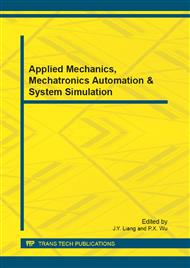p.701
p.707
p.713
p.717
p.721
p.726
p.732
p.737
p.741
Research of Compensating Weights of Cascade Hydropower Stations
Abstract:
The compensation benefits distribution weights model of cascade hydropower stations has been proposed. The method of compensation weights calculation has been discussed. The subjective weights in the station indexes are calculated by analytic hierarchy process and the objective weights by variance coefficient and the combination weights by Topsis. The calculation results will be evaluated. The increased benefits of the system will be distributed by the objective weights. The enthusiasm for electric energy production of each station will be increased because they can receive compensations from the whole increased benefits.
Info:
Periodical:
Pages:
721-725
Citation:
Online since:
September 2012
Authors:
Price:
Сopyright:
© 2012 Trans Tech Publications Ltd. All Rights Reserved
Share:
Citation:


